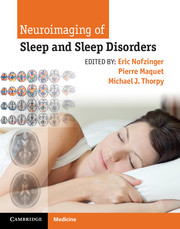Crossref Citations
This Book has been
cited by the following publications. This list is generated based on data provided by Crossref.
Reichert, Carolin
Maire, Micheline
Schmidt, Christina
and
Cajochen, Christian
2016.
Sleep-Wake Regulation and Its Impact on Working Memory Performance: The Role of Adenosine.
Biology,
Vol. 5,
Issue. 1,
p.
11.
Scullin, Michael K.
2017.
Do Older Adults Need Sleep? A Review of Neuroimaging, Sleep, and Aging Studies.
Current Sleep Medicine Reports,
Vol. 3,
Issue. 3,
p.
204.
Kung, Yi‐Chia
Li, Chia‐Wei
Chen, Shuo
Chen, Sharon Chia‐Ju
Lo, Chun‐Yi Z.
Lane, Timothy J.
Biswal, Bharat
Wu, Changwei W.
and
Lin, Ching‐Po
2019.
Instability of brain connectivity during nonrapid eye movement sleep reflects altered properties of information integration.
Human Brain Mapping,
Vol. 40,
Issue. 11,
p.
3192.
Schulz, Hartmut
2022.
The history of sleep research and sleep medicine in Europe.
Journal of Sleep Research,
Vol. 31,
Issue. 4,
Barel, Efrat
and
Tzischinsky, Orna
2022.
The Role of Sleep Patterns from Childhood to Adolescence in Vigilant Attention.
International Journal of Environmental Research and Public Health,
Vol. 19,
Issue. 21,
p.
14432.
Aquino, Giulia
and
Schiel, Julian E.
2023.
Neuroimaging in insomnia: Review and reconsiderations.
Journal of Sleep Research,
Vol. 32,
Issue. 6,
Groenewald, Karolien
Warwick, James
Dupont, Patrick
Ackerman, Jan‐Hendrik
Amsterdam, Olivia
and
Carr, Jonathan
2024.
Ictal SPECT Imaging Findings in Parkinson's Disease with Rapid Eye Movement Sleep Behavior Disorder.
Movement Disorders Clinical Practice,



